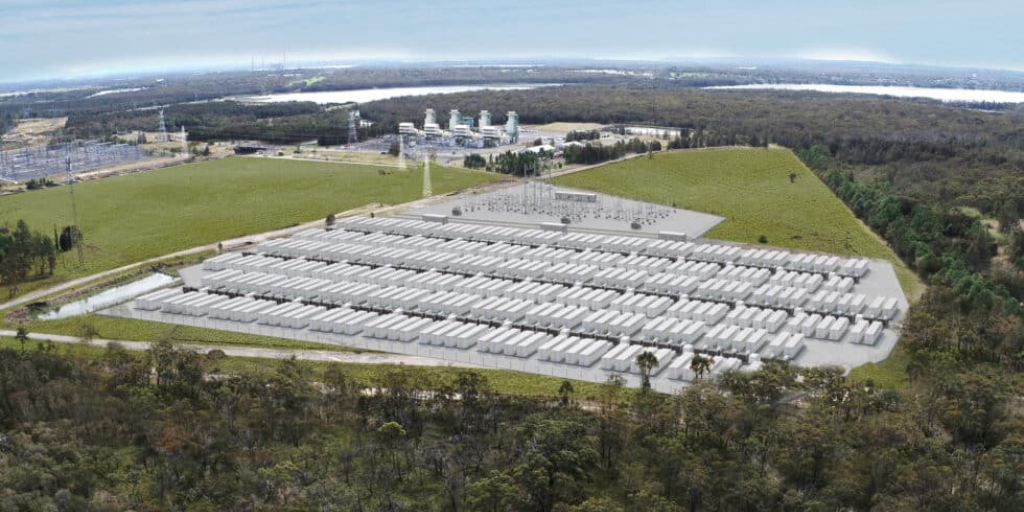
Australia has an “urgent need” for investment into long-duration energy storage, along with new generation resources and transmission infrastructure.
That’s if the country is to get a reliable electricity system as coal power plants – historically Australia’s primary source for power generation – are retired, according to the Australian Energy Market Operator (AEMO).
The AEMO issued an update to its 2022 Electricity Statement of Opportunities (ESOO) report today (21 February). The report offers technical and market data to participants in the National Electricity Market (NEM), which most of Australia’s states and grids are connected to.
The 2022 edition was only published in August, but AEMO noted that there have been significant changes in the NEM’s generation capacity even in the short time since then.
The good news is that reliability gaps forecast to appear in the supply of electricity in the states of South Australia this year and next year, and in Victoria from 2024 to 2025, have been pushed back a year or two.
That means new resources across natural gas, wind, solar PV, and battery storage have been added, or earmarked for installation soon that those states can call upon. Some natural gas plant retirement dates have also been pushed back, keeping the power plants in operation.
AEMO said that since August, 461MW/604MWh of battery energy storage system (BESS) projects have met the market operator’s commitment criteria on land, contracts, planning, finance, and construction, along with 1,326MW of new wind, all for connection to the NEM. Battery storage durations are gradually increasing from 1 hour to 2 hours and in some cases 4 hours, but hardly any long-duration resources, broadly defined as about 8-hour durations or more.
Coal still accounted for roughly 60% of generation in the NEM as late as the middle of 2021, but most coal is set to be retired by the early 2030s. Meanwhile, Australia has some of the world’s highest uptake of rooftop solar PV and growing shares of utility-scale solar PV and wind, with a population conscious of the environment and climate issues, as well as a strong business case for switching to non-fuelled generation.
While stats haven’t yet been published for 2022, in 2021 Australia surpassed its first gigawatt-hour of annual battery storage installations, including more than 750MWh of large-scale BESS, according to market research group Sunwiz which published figures last March.
‘Gas not a transition fuel for Australia’
Unlike most other wealthy countries, the role gas plays for generation is fairly small. Gas turbines are often used around the world to balance out gaps in supply from variable renewable generation.
In other words, Australia “has been making enormous progress in decarbonisation, certainly of energy supply” Dr Bruce Mountain of the Victoria Energy Policy Centre think tank told Energy-Storage.news recently.
“One of the striking things in Australia in comparison to other rich countries is the small role gas plays in our power system. Although it’s very important as a price setting fuel, we have a much smaller proportion of electricity supply from gas than just about every other wealthy country.”
As Mountain and the AEMO’s report both point out however, much of the coal fleet is old and inefficient, costing a lot to maintain and breaking down frequently, before the climate and air quality implications of the fuel are even considered.
That provides an imperative for Australia to get its energy sector transitioned quickly to renewables, and the idea of gas as a “transition fuel” is a settled debate, according to the academic.
“Gas is expensive in Australia, we’ve got an export market that’s willing to pay far more than we need. And we have one thing that few other wealthy countries have which is plentiful: wind and land and sun; and good wind, we don’t have ‘dunkelflaute’ as they call it in Germany to anywhere near the same degree.”
In the near-term, among the new resources that will provide reliability to the grid are the 1.68GWh Waratah Super Battery which is being built in New South Wales, driven forward by the state’s government.
The project is one of a number of new BESS assets awarded a system integrity and protection scheme (SIPS) contract, which essentially is a mechanism through which the batteries are deployed to increase hosting capacity of the network over long distances between demand centres.
Daniel Westerman, AEMO’s CEO, said that the pipeline of proposed new projects in the NEM total three times the current installed capacity, and that pipeline is 86% made up of the three major clean energy technologies: wind, solar PV and large-scale BESS.
However, meeting that reliability gap as coal comes offline will require a more diverse fleet of resources including long-duration storage.
“Investment in firming generation, such as pumped hydro, gas and long-duration batteries, is critical to complement our growing fleet of weather-dependent renewable generation to meet electricity demand without coal generation,” Westerman said.
In a recent blog for our sister site PV Tech, Dan Shreves, VP of market intelligence at analysis and research firm Clean Energy Associates (CEA), wrote that 2023 will be the year the “hype cycle” ends for long-duration energy storage (LDES) technologies and providers will need to prove they can deliver on their promises.
Curious what renewable energy can do for you? We are here to help.